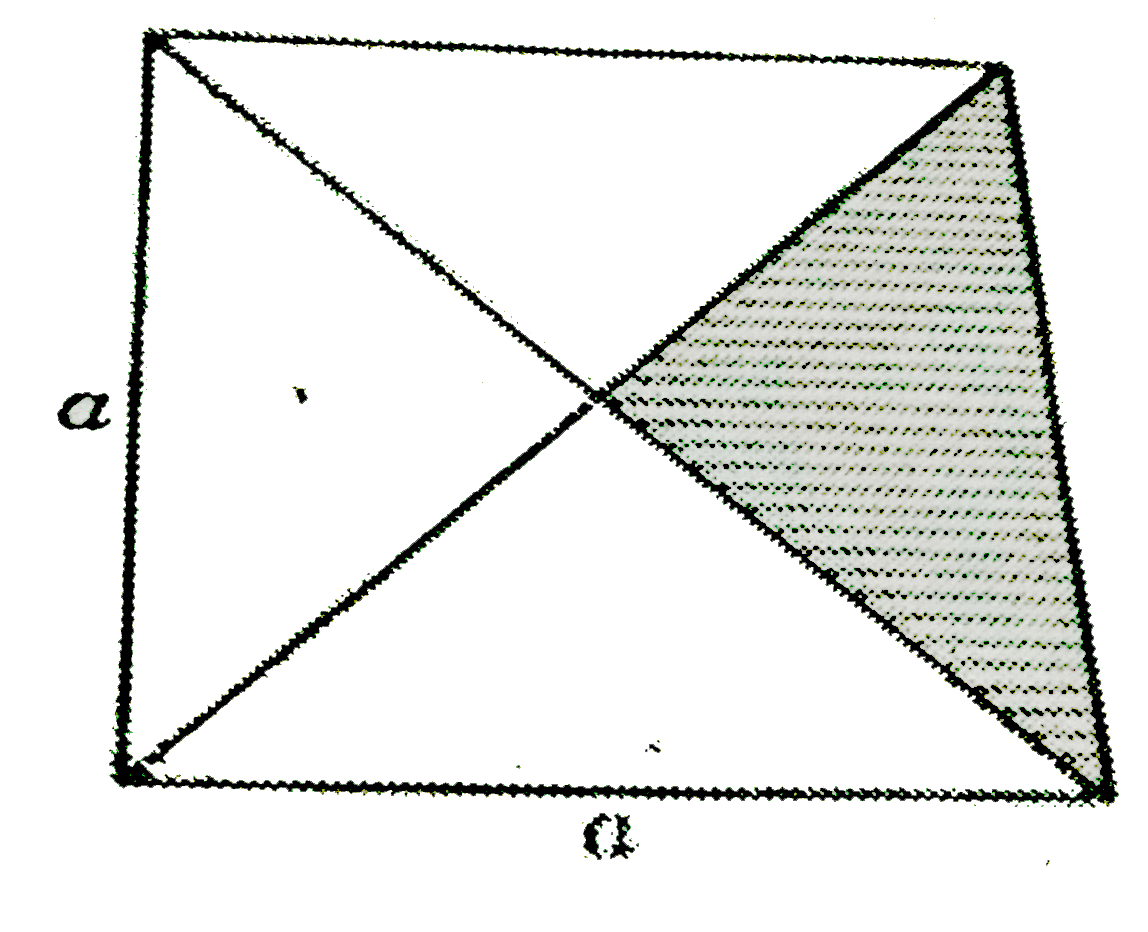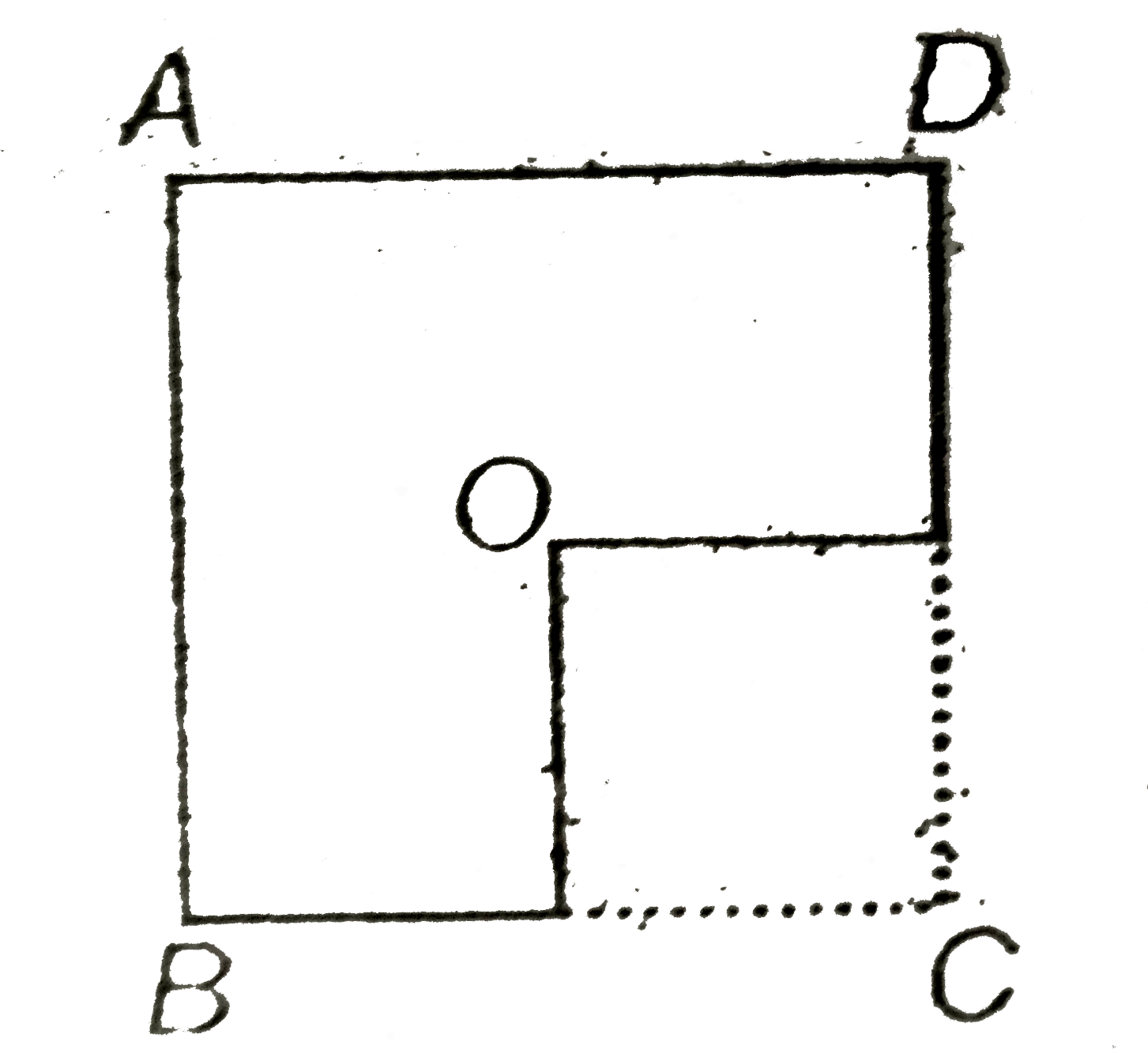Fig. shown a uniform square plate from identical squares at the corners can be removed. (a) Where is the centre of mass of the plate originally ? (b) Where is it after square 1 is removed ?
(c ) where is it after squares 1 and 2 are removed ? (d) Where is c.m after squares 1,2,3, are removed ?
(f) Where is c.m after all the four squares are removed ? Answer in terms of quadrants and axes.

Video Solution
Text Solution
(a) Originally, centre of mass is at the centre O.
(b) After square 1 is removed, c.m lies in quardent 3.
(c ) After squares 1 and 2 are removed c.m lies on Y-axis below O.
(d) When squares 1 and 3 are removed, c.m will remain at O.
(e) When squares 1,2,3, are removed, c.m will shift to fouth quadrant.
(f) When all the four squares are removed, c.m will shift back to O.
|
Topper's Solved these Questions
- SYSTEMS OF PARTICLES AND ROTATIONAL MOTIONBOOK - PRADEEPCHAPTER - SYSTEMS OF PARTICLES AND ROTATIONAL MOTIONEXERCISE - SOLVED EXAMPLES TYPE A
2 Videos
- SYSTEMS OF PARTICLES AND ROTATIONAL MOTIONBOOK - PRADEEPCHAPTER - SYSTEMS OF PARTICLES AND ROTATIONAL MOTIONEXERCISE - SOLVED EXAMPLES
62 Videos
- RAY OPTICSBOOK - PRADEEPCHAPTER - RAY OPTICSEXERCISE - Problem For Practice(a)
25 Videos
- THERMODYNAMICSBOOK - PRADEEPCHAPTER - THERMODYNAMICSEXERCISE - Assertion- Reason Type Questions
19 Videos
Similar Questions
Knowledge Check
From a uniform square plate the shaped portions are removed as shown in figure. The coordinates of centre of mass of the remaining plate are x,y Axes and origon are shown in figure.
 Ax<a2,y<a2Bx>a2,y<a2Cx<a2,y>a2Dx>a2,y>a2
Ax<a2,y<a2Bx>a2,y<a2Cx<a2,y>a2Dx>a2,y>a2
From a uniform square plate of side a and mass m, a square portion DEFG of side a2 is removed. Then, the moment of inertia of remaining portion about the axis AB isA7ma216B3ma216C3ma24D9ma216A square matrix A is called orthogonal if
Where A' is the transpose of A.AA=A2BA'=A−1CA=A−1DA=A'
From a square sheet of uniform density , a portion a removed shown shaded in fig. Find the centre of msas of the remaining portion is the side of the square is α

View SolutionFour point masses are placed at the corners of a square of side 2 m as shown in the figure. Find the centre of mass of the system w.r.t. the centre of square.

View SolutionFind the area of the shaded region in Fig where ABCD is a square of side 14 cm.

View SolutionA uniform square plate has a small piece Q of an irregular shape removed and guled to the centre of the plate leaving a hole behind in figure. The moment of inertia about the z-axis is then,
 .
.
View SolutionA square of side a2 is removed from a disc having radius a . Find centre of mass of remaing portion.

View Solution

